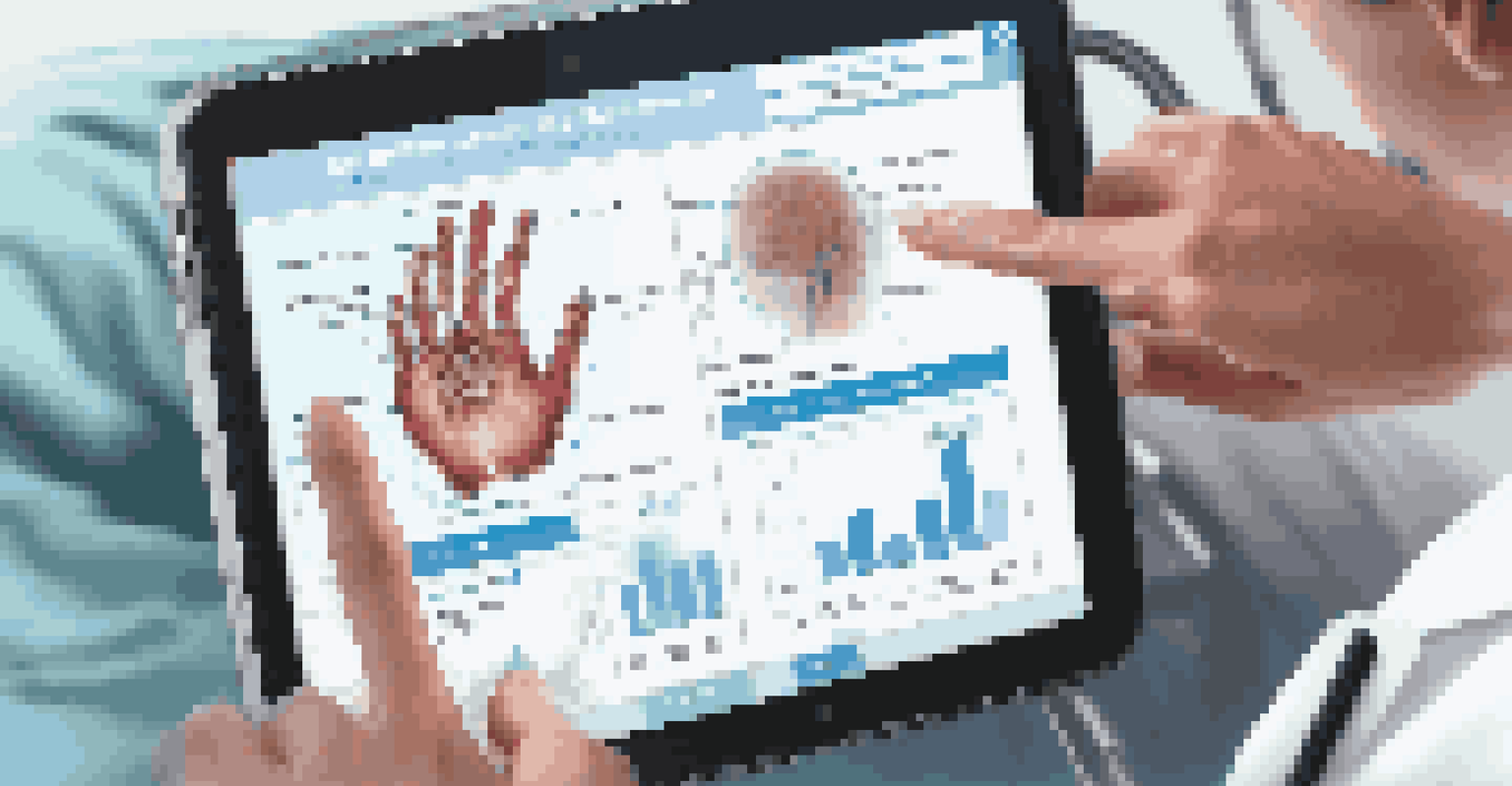How EHRs Facilitate Better Communication in Patient Care Teams

Understanding EHRs and Their Role in Healthcare
Electronic Health Records (EHRs) are digital versions of patients' paper charts. They provide a comprehensive view of a patient's medical history and treatment plans, making it easier for healthcare providers to access critical information. Imagine a file cabinet where every patient's important documents are stored, but instead of dust and paper cuts, you have a clean, organized digital space.
The greatest medicine of all is teaching people how not to need it.
EHRs enhance the sharing of information among different healthcare professionals, from doctors to nurses to specialists. This seamless access allows for more coordinated care, reducing the chances of errors and improving overall patient outcomes. Just like how a well-oiled machine works best when all parts are in sync, EHRs ensure that everyone on the care team is informed and aligned.
Moreover, EHRs can also integrate information from various sources, including lab results and imaging studies. This integration helps healthcare teams make informed decisions quickly, much like having a GPS that provides real-time traffic updates, guiding you to your destination faster and more efficiently.
Streamlining Communication Among Care Team Members
One of the most significant benefits of EHRs is their ability to streamline communication. With features like secure messaging, care team members can share updates and discuss patient care instantly, regardless of their location. Think of it as a virtual chat room where everyone can contribute to the conversation about a patient’s care.

This instant communication helps prevent misunderstandings and ensures that all team members are on the same page. For example, if a nurse notices a change in a patient's condition, they can quickly alert the physician through the EHR, leading to timely interventions. It's all about keeping the lines of communication open and efficient, just like a well-coordinated sports team passing the ball seamlessly.
EHRs Enhance Care Coordination
By centralizing patient information, EHRs facilitate effective collaboration among healthcare providers.
Additionally, EHRs often include tools for assigning tasks and tracking their completion. This feature promotes accountability within the team, ensuring that responsibilities are clear and nothing falls through the cracks. Imagine a shared to-do list that everyone can access and update, keeping the whole team informed and engaged.
Improving Patient Engagement Through EHRs
EHRs not only facilitate communication among healthcare providers but also enhance patient engagement. Many EHR systems come with patient portals that allow individuals to access their medical records, lab results, and treatment plans. This transparency empowers patients to take an active role in their healthcare journey.
In the midst of chaos, there is also opportunity.
When patients can see their health information, they are more likely to ask questions and participate in discussions with their care team. This interaction fosters a collaborative environment where patients feel valued and respected, much like being part of a team where everyone’s input matters.
Moreover, EHRs can send reminders for upcoming appointments and medication refills, helping patients stay on track with their health goals. By keeping patients informed and engaged, EHRs contribute to better adherence to treatment plans and improved health outcomes.
Enhancing Care Coordination Across Providers
Care coordination is crucial in today's complex healthcare landscape, and EHRs play a vital role in facilitating this process. By providing a centralized platform for sharing patient information, EHRs enable different providers to collaborate effectively. Imagine a group project where everyone has access to the same materials; it makes working together so much easier.
With EHRs, specialists can quickly review a patient’s history before consultations, leading to more informed decisions. For instance, if a primary care physician refers a patient to a cardiologist, the cardiologist can access the patient's complete health record before the first visit, ensuring a smoother transition of care.
Boosting Patient Engagement
EHRs empower patients by providing access to their health information, fostering a collaborative healthcare experience.
This level of coordination reduces the risk of duplicated tests and conflicting treatments, ultimately benefiting the patient. EHRs serve as a bridge that connects various healthcare entities, promoting a united approach to patient care.
Reducing Errors and Enhancing Safety in Patient Care
One of the most critical advantages of EHRs is their role in reducing errors and enhancing patient safety. EHRs can flag potential drug interactions, allergies, or other safety concerns based on the patient's medical history. It's akin to having a safety net that catches mistakes before they happen.
This proactive approach not only protects patients but also instills confidence in the care team. When providers trust that the EHR is providing accurate and relevant information, they can make decisions with greater peace of mind. It's like having a reliable compass that keeps you on the right path.
Additionally, EHRs facilitate better documentation practices, ensuring that all patient interactions and treatment decisions are recorded accurately. This documentation serves as an essential reference point for future care, reducing the likelihood of misunderstandings and enhancing the overall safety of patient care.
Fostering a Culture of Collaboration in Healthcare
EHRs contribute to fostering a culture of collaboration within healthcare teams. By providing tools for sharing information and communicating effectively, EHRs break down silos that often exist in traditional healthcare settings. Imagine a team of rowers working in sync; when everyone moves together, they achieve more.
This collaborative culture encourages team members to share insights and expertise, leading to more comprehensive patient care. For example, a nurse may notice a pattern in patient symptoms that the doctor might not see immediately. EHRs enable such observations to be communicated quickly, enhancing the decision-making process.
Reducing Errors for Safer Care
EHRs help mitigate medical errors by flagging potential issues, enhancing overall patient safety.
Moreover, this culture of collaboration extends beyond just the immediate care team. EHRs facilitate communication with external providers, specialists, and even community resources, ensuring that patients receive well-rounded care. It's all about creating a network of support that wraps around the patient, much like a safety blanket.
Future Trends in EHR Communication and Patient Care
As technology continues to evolve, so do the capabilities of EHRs in facilitating communication. Future trends include the integration of artificial intelligence and machine learning, which can analyze patient data for insights that enhance communication and decision-making. It's like having a virtual assistant that helps the care team anticipate needs before they arise.
Telemedicine is another trend that complements EHRs, allowing for real-time communication between patients and providers. This integration can lead to more immediate interventions and follow-ups, making healthcare more accessible and responsive. Imagine being able to consult your doctor without leaving your home; that's the future of patient care.

Finally, as patient engagement becomes a focal point in healthcare, EHRs will likely continue to develop features that empower patients even further. The goal is to create a more interconnected healthcare environment where communication flows freely, ultimately leading to enhanced patient experiences and outcomes.